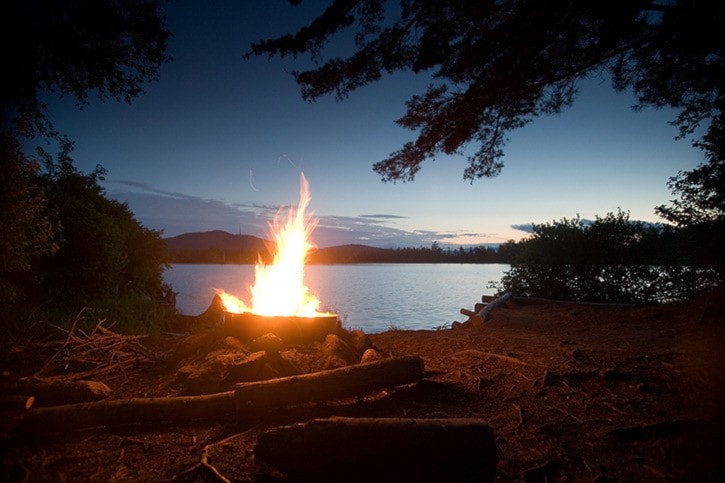With B.C. fire season off to an early start, the Southeast Fire Centre is reminding communities and individuals to do their part to help protect homes, resources and infrastructure from wildfire threats.
People with properties adjacent to forest or grassland need to be aware that they are at risk from damage by wildfire, according the BC Wildfire Service (BCWS).
The BCWS recommends property owners start with a general yard cleanup, such as removing needles, branches and underbrush that could fuel a fire. Long grass should be cut, low-level branches pruned and bark mulch with gravel or decorative rock, replaced.
For those choosing to burn yard waste, rules do apply but vary depending upon the community.
“First, we encourage people to phone their municipality to find out if they can burn,” says regional fire chief Terry Martin. “And if you are able to burn, do so following the rules and regulations set forth in your local municipality.”
Before lighting the match, Martin asks people to check in with the fire department on its non-emergency line.
“We’ve had people burning slash piles locally but they’ve done so through the Southeast Fire Centre and have a registration number,” he explained. “We ask they do contact us with that registration number so we know what’s going on and do not send out our firefighters,” he added. “Because people are very concerned when they see smoke and they will call and report.”
So far, the year’s been quiet within local municipalities and open fires, campfires and forest use is unrestricted in the outlying areas governed by the centre.
However, a look at the five-year southeast trend shows an ever increasing number of wildfires beginning in 2011. That year, 132 fires burned 62 hectares in the district, and cost about $2.7 million to extinguish. The following year, almost double the fires impacted 1,500 hectares and cost over $8.5 million to battle.
Statistics only become more dire, with 2015 having the highest number of wildfires, 577, burning over 14,000 hectares costing almost $32 million to fight.
Of those fires, over half were people-caused.
Fire Information Fanny Bernard reminds the public that flames can escape quickly so it’s crucial to always be in arms reach of the campfire.
“I think it’s really important for people to know that when they have a campfire, unattended means you are leaving the area for any amount of time,” she said in a previous Trail Times interview. “That means turning in for the night, fishing for a few hours or going on a quick hike. If you are leaving for any amount of time, the fire has to be put out.”
Ashes have to be cool to the touch, which means at least eight litres of water need to be on hand along with a hand tool such as a shovel, to stir the cinders and ensure water soaks deep enough to completely extinguish the fire.
“People are surprised how quickly a fire can spark and how quickly the wind can carry it to combustible material,” said Bernard. “That’s why site selection is important and also, if it’s windy enough to carry embers or sparks, then it’s not a good day for a campfire.”
She encourages anyone who sees smoke to report it, and don’t assume someone else has called.
For up-to-date information, visit bcwildfire.ca. To report a forest fire call *8555 on a cell or 1.800.663.5555.
